Tiny Home Floor Plans That Maximize Small Spaces
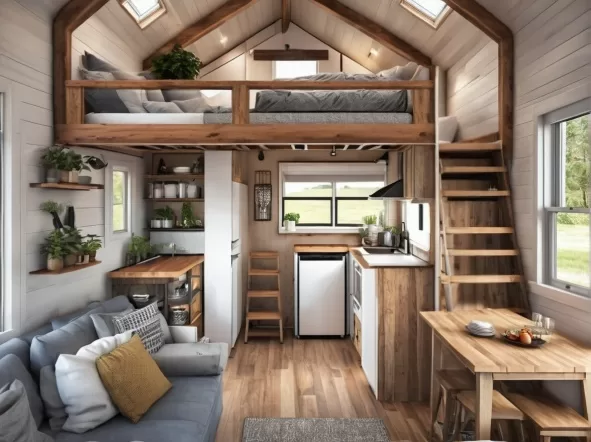
Tiny homes are redefining the way we live. With a growing movement toward minimalism, sustainability, and financial freedom, many people are turning to these small but mighty homes to maximize their space and simplify their lives. But living in a smaller footprint doesn’t mean sacrificing comfort or style. The key lies in thoughtful, intelligent design that allows you to maximize small spaces. In this blog post, we will explore some of the best tiny home floor plans that optimize every square foot to create a functional, comfortable, and beautiful living environment.
Introduction
The tiny home movement is gaining momentum as more people seek to downsize and live more intentionally. Whether it’s about lowering living costs, reducing your environmental impact, or simply wanting a cozier, more manageable space, tiny homes offer a host of benefits. However, one of the biggest challenges of tiny living is figuring out how to make the most of the limited square footage.
This is where floor plans that maximize small spaces come into play. With smart design solutions, you can turn even the tiniest of homes into a space that feels open, organized, and stylish. In this post, we’ll walk you through various floor plans that optimize space utilization, provide multi-functional living areas, and maintain an aesthetically pleasing environment—all while ensuring comfort.
1. What Does It Mean to Maximize Small Spaces?
Before diving into specific floor plans, it’s essential to understand the fundamental principles that maximize small spaces. Successful tiny home floor plans focus on several core ideas:
- Multi-functional furniture: Every piece of furniture should serve multiple purposes, such as a sofa that converts into a bed or a dining table that doubles as a workspace.
- Vertical storage: Instead of spreading out, the focus is on going up. Tall shelves, hanging storage, and loft spaces are common strategies.
- Open layouts: By minimizing interior walls, tiny homes feel more open and spacious.
- Light and color: The right use of natural light and color can make small spaces feel larger and more inviting.
a. Key Statistics to Understand the Tiny Home Market
The average tiny home in the U.S. measures between 100 and 400 square feet, compared to a traditional home’s average of 2,600 square feet. Despite their small size, tiny homes can cost between $30,000 and $60,000, depending on the design and materials used. Additionally, studies show that 68% of tiny homeowners have no mortgage, making financial freedom one of the biggest draws to this lifestyle. Living tiny may require less upfront investment but often results in significant long-term savings.
2. The Best Tiny Home Floor Plans to Maximize Small Spaces
a. The Open Floor Plan: A Blank Canvas for Customization
One of the most popular tiny home layouts is the open floor plan. This layout is often chosen because it allows for flexibility and customization, letting homeowners create different zones without rigid walls. In an open floor plan, the kitchen, living, and dining areas blend seamlessly together, giving the illusion of more space.
For example, placing the kitchen along one wall frees up the rest of the area for a dining and living combo. The lack of internal walls opens up sightlines, making the space feel larger and more connected.
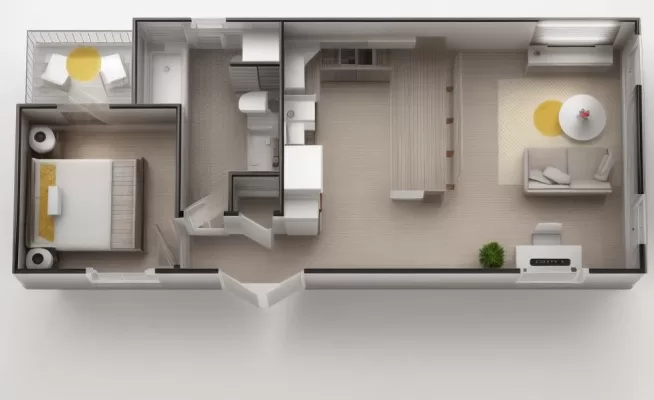
b. The Loft Layout: Maximizing Vertical Space
Another highly effective layout to maximize small spaces is the loft design. This involves building a sleeping area above the main living space, freeing up valuable square footage below. Lofts are often used for bedrooms, allowing the ground floor to be dedicated to communal areas, storage, or even additional workspaces.
A loft can also create opportunities for creative storage solutions. Using the vertical height for storage nooks or shelving along the walls is a smart way to avoid clutter.
According to experts, lofts can add up to 30% more usable space to your home, depending on the overall ceiling height. But be mindful that lofts work best in tiny homes with at least 10-foot ceilings to allow for comfortable movement.
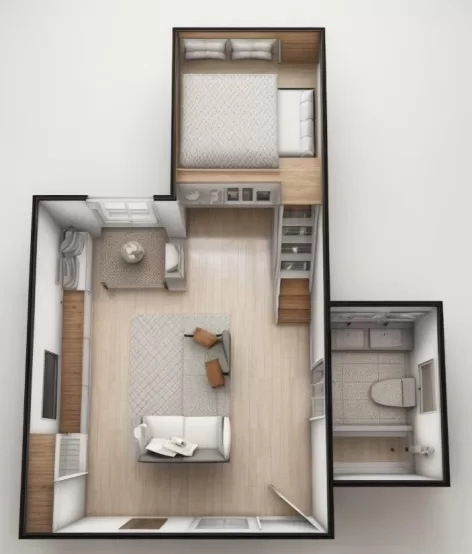
c. The Two-Story Layout: Expanding Horizontally and Vertically
For those who prefer a bit more separation between living and sleeping areas, a two-story tiny home layout is ideal. While not common in ultra-small homes, homes in the 350-400 square foot range can benefit from two stories. The second level usually houses the bedroom and bathroom, while the ground floor features the kitchen, living area, and additional storage. A staircase—often with built-in storage—connects the two floors.
While adding a second floor increases construction costs, it can maximize small spaces by doubling your living area without increasing your home’s footprint.
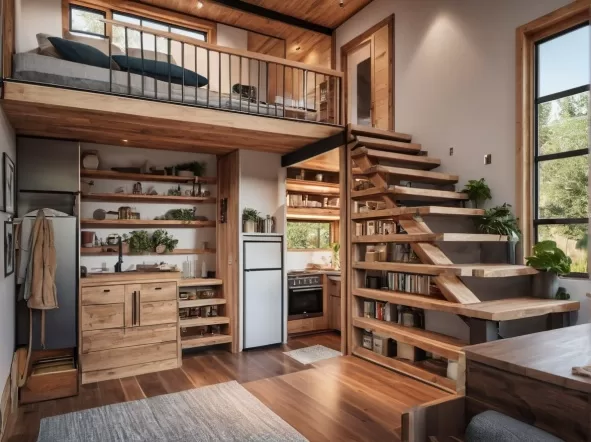
d. Tiny Home on Wheels: Mobility Meets Functionality
Tiny homes on wheels (THOWs) offer the flexibility to travel while maintaining a functional living space. The challenge here is to design floor plans that work within strict width and height restrictions, typically 8.5 feet wide to meet road legal limits. Despite the constraints, there are numerous THOW floor plans that excel at maximizing small spaces.
A popular design for tiny homes on wheels includes a central living space flanked by a kitchen on one end and a bathroom on the other. Often, a lofted bed is placed above the kitchen or bathroom to save floor space. Foldable or retractable furniture is also commonly used in these designs to enhance flexibility.
Statistics reveal that 89% of tiny homeowners travel with their THOWs at least once a year, highlighting the importance of mobility in these designs.
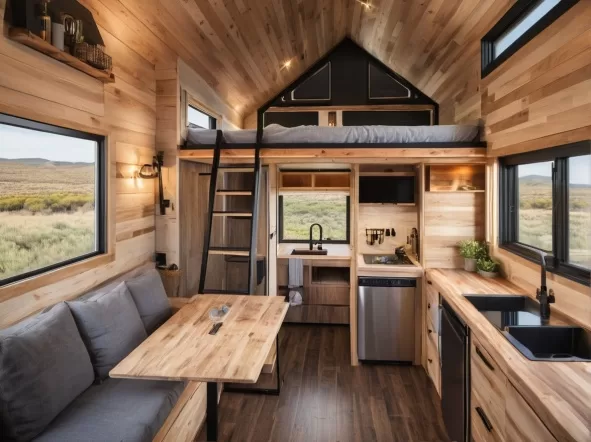
3. Key Features That Help Maximize Small Spaces
a. Multi-Functional Furniture
One of the most critical aspects of tiny home living is furniture that serves multiple purposes. For example, a dining table that folds into the wall when not in use or a couch that doubles as a bed for guests can maximize small spaces by ensuring that every piece of furniture contributes to the overall functionality.
b. Built-In Storage Solutions
Efficient storage is vital in a tiny home. Built-in shelves, hidden compartments under staircases, and storage benches are all effective ways to keep belongings organized without sacrificing floor space. In fact, incorporating built-in storage solutions can increase usable space by 15-20%.
c. Pocket Doors and Sliding Walls
Traditional doors can take up significant space when they swing open. To avoid this, many tiny home floor plans use pocket doors or sliding walls. Not only do these save space, but they also provide more flexibility when it comes to room layout and privacy.
d. Natural Light and Large Windows
To combat the potential for a cramped feeling in small spaces, many tiny home designs incorporate large windows and skylights to bring in natural light. Light-colored walls and reflective surfaces can further enhance this effect, making your small space feel more expansive.
4. The Benefits of Choosing a Floor Plan That Maximizes Small Spaces
a. Financial Savings
One of the most appealing aspects of tiny home living is the financial savings. Not only are tiny homes cheaper to build (with the average cost being $50,000, compared to over $150,000 for a traditional home), but they are also much cheaper to maintain and heat or cool. With a well-thought-out floor plan that maximizes small spaces, you can live comfortably in a smaller footprint without sacrificing essential amenities.
b. Environmental Impact
Living in a tiny home also significantly reduces your environmental footprint. Tiny homes use fewer building materials, require less energy to maintain, and encourage a more sustainable lifestyle. Additionally, tiny homes often incorporate energy-efficient features like solar panels and composting toilets, reducing reliance on traditional utilities.
c. Emotional Well-Being
Finally, living in a tiny home that is well-designed to maximize small spaces can also positively impact your mental and emotional well-being. Studies have shown that clutter and disorganization can lead to stress and anxiety. A well-organized tiny home allows for a simplified lifestyle, with less focus on material possessions and more on experiences.
Conclusion
In conclusion, tiny homes are much more than a passing trend. They represent a shift towards more intentional, efficient, and sustainable living. With the right floor plan, you can maximize small spaces to create a home that is functional, beautiful, and perfectly suited to your lifestyle. There are countless ways to make the most of your square footage without compromising comfort or style.
Tiny homes offer endless opportunities to live big in a small space, and with careful planning, you can create a home that feels spacious, inviting, and entirely your own.
